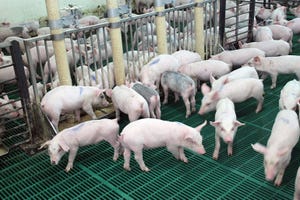Legislative Watch: Farm bill heads to president; U.S.-China progress given deadline; lower farm income estimated; Bergland passes away.

The 2018 farm bill is on its way to the White House for President Trump’s consideration and signature. Congress expedited consideration of the bill once the Farm Bill Conference Committee leadership released the bill on Monday night.
It passed the Senate on a very strong bipartisan vote of 87-13, the largest vote for a farm bill since the Great Depression. The House passed the bill 369-47 with strong bipartisan support. The Senate and House passed the bill with veto-proof margins. It is expected President Trump will sign the bill.
The five-year farm bill is estimated to cost $867 billion over 10 years. The bill continues many of the farm programs of the 2014 farm bill — Agriculture Risk Coverage; the Price Loss Coverage program; and the Marketing Assistance Loans with Loan Deficiency Payments. It establishes a vaccine bank, restores funding for trade promotion programs, increases commodity loan rates, increases Conservation Reserve Program acres, legalizes industrial hemp and re-establishes an undersecretary of Rural Development.
The bill does not expand the work requirements for the Supplemental Nutrition Assistance Program that was contained in the original House bill.
Summary of various provisions:
Animal health and disease preparedness — $300 million is provided over 10 years for the Animal Disease Response Preparedness and Response Program in which money can be spent for a foreign animal disease vaccine bank; National Animal Health Laboratory Network which provides disease surveillance and diagnostic; and block grants to states to prepare for an FAD outbreak.
Feral swine — Authorizes a pilot project for the eradication and control of feral swine.
Trade promotion programs — The bill reauthorizes and maintains funding for the Foreign Market Development Program and the Market Access Program. FMD and MAP will be able to be used for trade promotion in Cuba.
Commodity loan rates — Commodity loan rates are increased for various commodities. Soybean loan rate goes from $5 a bushel to $6.20; corn increases from $1.95 to $2.20 per bushel; wheat increases from $2.94 per bushel to $3.38; ELS cotton goes from $0.7977 per pound to $0.95 per pound; rice $6.50 per hundredweight to $7; and oats goes from $1.39 per bushel to $2. Payment limits on marketing loan gains and LDPs are eliminated.
Sugar — Loan rates will increase 1 cent per pound for cane sugar and 1.28 cents for beet sugar.
Payment limits — Producers’ cousins, nephews and nieces will qualify for commodity program payments. Payments are limited to $125,000 per person or $250,000 per married couple.
ARC and PLC — Farmers will be able to switch between the Agriculture Risk Coverage and the Price Loss Coverage programs in 2019 and again in 2021, 2022 and 2023. The 2014 farm bill allowed for a one-time selection that could not be changed over the five-years of the bill.
Crop insurance — Few changes are made to the current crop insurance program. Hemp will now be eligible for crop insurance.
CRP — CRP is increased from 24 million acres to 27 million acres of which 2 million acres are reserved for grasslands. Payment rates are capped to keep them below local rental rates to help pay for the increased acres.
EQIP — The annual funding for the Environmental Quality Incentives Payment will increased to $2.025 billion with half of the funds to be used by livestock producers.
SNAP — The final bill does not include the expansion of work requirements for the SNAP that was contained in the original House bill. This provision became a major partisan issue in the House and the Senate on a bipartisan basis rejected it.
Rural development — The bill requires that an undersecretary of Rural Development be re-established. Last year, Secretary Perdue’s reorganization plan eliminated this position, but many in Congress felt it was important to reinstate.
The large votes in favor of the farm bill were the result of Congress producing a bipartisan bill that will help provide certainty to producers over the next five years.
March 1 is deadline for U.S.-China progress
U.S. Trade Representative Robert Lighthizer says March 1 is the deadline for the United States and China to make progress on the various trade issues including IP theft, forced technology transfer, etc. Lighthizer said on Face the Nation, “As far as I’m concerned, it’s a hard deadline. When I talked to the president of the United States, he’s not talking about going beyond March. He’s talking about getting a deal. If there is a deal to be gotten, we want to get it in the next 90 days.”
President Trump has threatened to increase tariffs from 10% to 25% on $200 billion of Chinese goods if the two sides do not reach an agreement.
Lower net farm income estimated
USDA’s Economic Research Service estimates net farm income at $66 billion this year or a 12% drop. This will be close to a 15-year low. Net farm income has declined four out of the last five years.
According to the ERS, government payments are up 18% this year. This is the result of disaster assistance and the administration’s trade relief payments. Payments for the ARC and PLC programs are lower.
Secretary Bob Bergland passes away
Bob Bergland, who served as the 20th secretary of agriculture, died last week. During his term as secretary, Bergland faced a farm crisis and had to defend President Carter’s Russian grain embargo.
Prior to serving as secretary, he was a Congressman from Minnesota and served on the House Agriculture Committee. He also was president of the National Rural Electric Cooperative Association.
About the Author(s)
You May Also Like



